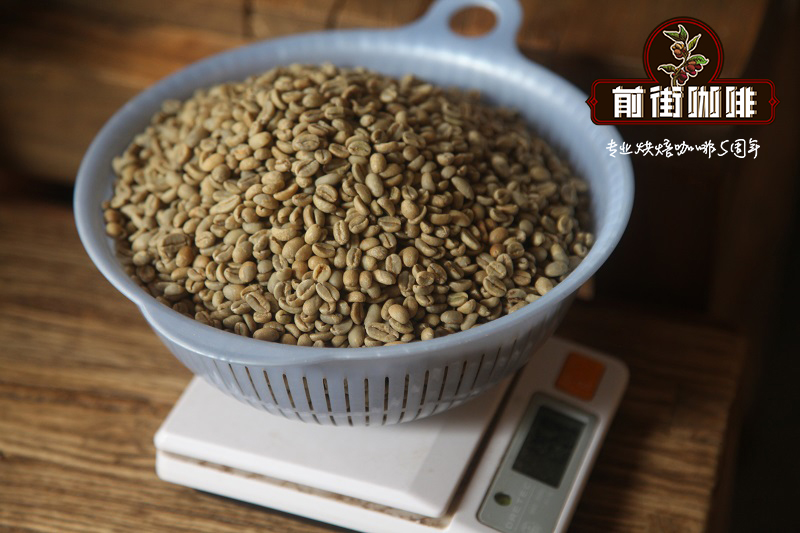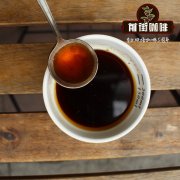What are the flavor and taste characteristics of washed coffee beans in Huayang Mello Manor, St. Vincent, Honduras?

Professional coffee knowledge exchange more coffee bean information please follow the coffee workshop (Wechat official account cafe_style)
What are the flavor and taste characteristics of washed coffee beans in Huayang Mello Manor, St. Vincent, Honduras? What are the characteristics of the variety of Pacas in Honduras?
Treatment: washing
Bean seed: 100% Arabica Pacas
Flavor: red grape blackcurrant cashew fresh cedar caramel chocolate clean and round
Coffee flavor
Various nutrients from raw coffee beans are thermally degraded into various odor molecular structures under baking, producing flavors similar to those of various aromas. Good coffee beans are naturally rich in aroma, and in high temperature, medium temperature, low temperature, there will be a variety of natural aroma changes, very pleasant, worthy of careful taste.
Washing of Huayu Mello Manor in Saint Vincent treatment Plant, Honduras
Red grape blackcurrant cashew fresh cedar caramel chocolate clean and round
Honduras has begun to grow coffee for more than 200 years. According to statistics, the planting area now reaches 280000 hectares, which are mainly small-scale coffee farmers. 92% of Honduran coffee farmers are small individuals. In the coffee garden, coffee farmers harvest red fruits, wash and ferment them and grade them according to the needs of the market to meet the different tastes of consumers.
St. Vincent processing Plant (San Vicente)
It is an ancient classic processing plant in Honduras, presided over by a famous local agronomist Mr. Angel Arturo Paz, this is the secret of St. Vincent's treatment plant in COE (Cup Of Excellence). Acquire coffee cherries from small farmers in surrounding towns such as El Cielito, Las Flores and El Cedral, and greatly help them in terms of expertise, technology and economy. The coffee produced in this area has always been amazing with high sweetness and fruity.
Arabikapakas (Pacas) belongs to the Bourbon strain, that is, the natural variety of bourbon (Mutation). First discovered and selected in El Salvador in 1949, the biggest difference with bourbon is that the plant is shorter, the fruit is clustered, and the yield is the same, but the flavor performance is much better than that of Caturra, a close relative with a short bourbon nickname, so it is often used as the basis of breeding. The most famous case is the hybrid offspring of Pacas and Maragogype-Pacamara.
Pacas (Pacas): a bourbon variety found in El Salvador. In 1935, the Salvadoran coffee farmer "Don Alberto Pacas" selected a high-capacity San Ramon bourbon variety to be planted on a farm. In 1956, his coffee tree yielded more fruit than the same kind of coffee tree. Professor "Dr. William Cogwill" of the University of Florida identified this as a genetic mutation in bourbon and named it "Pacas".
Pacas, with its high output and good quality, is popular in Central America. Currently, 68% of El Salvador is bourbon, while Pacas has 29%.
Treatment method (Coffee Processes)
It refers to the process of turning ripe red fruits into dried raw beans. Each treatment method has its own advantages and disadvantages, and is affected by the natural environment and demand of the producing area, so each producing area has its own suitable treatment method. This batch is solarization treatment.
[washing method] Washed / Wet Processed
After removing the peel and pulp, soak in water in the fermentation tank to ferment, remove the residual pectin mucosa on the inner pericarp, and then rinse with water, which is rich in acidity, one of the conditions of fine coffee.
Important Notice :
前街咖啡 FrontStreet Coffee has moved to new addredd:
FrontStreet Coffee Address: 315,Donghua East Road,GuangZhou
Tel:020 38364473
- Prev

Honduran coffee beans what are the flavor and taste characteristics of washed Kaduai coffee beans in Santa Tamata Manor?
Professional coffee knowledge exchange more coffee bean information please follow the coffee workshop (Wechat official account cafe_style) Honduran coffee beans Santa Mata Manor washed Kaduai coffee beans flavor and taste characteristics? The variety advantage of Honduran coffee beans? Honduras has always been not in the top several places in the boutique coffee market, but Honduras has the advantages of natural environment.
- Next

Honduran boutique coffee beans COE 17th Valentine Manor Pacas Flavor and mouthful of washed beans
Professional coffee knowledge exchange more coffee bean information please follow the coffee workshop (Wechat official account cafe_style) Honduran boutique coffee beans COE 17th Valentine's Manor Pacas seed water washed beans flavor and taste characteristics? Flavor description: citrus, BlackBerry, honey, chocolate, strong aroma, orange juice taste, round, sweet, soft and smooth. Award winning record: Hongdu, 2017
Related
- Detailed explanation of Jadeite planting Land in Panamanian Jadeite Manor introduction to the grading system of Jadeite competitive bidding, Red bid, Green bid and Rose Summer
- Story of Coffee planting in Brenka region of Costa Rica Stonehenge Manor anaerobic heavy honey treatment of flavor mouth
- What's on the barrel of Blue Mountain Coffee beans?
- Can American coffee also pull flowers? How to use hot American style to pull out a good-looking pattern?
- Can you make a cold extract with coffee beans? What is the right proportion for cold-extracted coffee formula?
- Indonesian PWN Gold Mandrine Coffee Origin Features Flavor How to Chong? Mandolin coffee is American.
- A brief introduction to the flavor characteristics of Brazilian yellow bourbon coffee beans
- What is the effect of different water quality on the flavor of cold-extracted coffee? What kind of water is best for brewing coffee?
- Why do you think of Rose Summer whenever you mention Panamanian coffee?
- Introduction to the characteristics of authentic blue mountain coffee bean producing areas? What is the CIB Coffee Authority in Jamaica?

